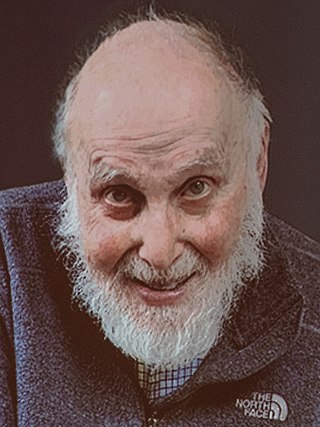Related Research Articles
Optica is a professional society of individuals and companies with an interest in optics and photonics. It publishes journals and organizes conferences and exhibitions. It currently has about 488,000 customers in 183 countries, including nearly 300 companies.

The International Union of Pure and Applied Physics is an international non-governmental organization whose mission is to assist in the worldwide development of physics, to foster international cooperation in physics, and to help in the application of physics toward solving problems of concern to humanity. It was established in 1922 and the first General Assembly was held in 1923 in Paris. The Union is domiciled in Geneva, Switzerland.
Naomi J. Halas is the Stanley C. Moore Professor in Electrical and Computer Engineering, and professor of biomedical engineering, chemistry and physics at Rice University. She is also the founding director of Rice University Laboratory for Nanophotonics, and the Smalley-Curl Institute. She invented the first nanoparticle with tunable plasmonic resonances, which are controlled by their shape and structure, and has won numerous awards for her pioneering work in the field of nanophotonics and plasmonics. She was also part of a team that developed the first dark pulse soliton in 1987 while working for IBM.

Gérard Albert Mourou is a French scientist and pioneer in the field of electrical engineering and lasers. He was awarded a Nobel Prize in Physics in 2018, along with Donna Strickland, for the invention of chirped pulse amplification, a technique later used to create ultrashort-pulse, very high-intensity (petawatt) laser pulses.

Arthur Ashkin was an American scientist and Nobel laureate who worked at Bell Laboratories and Lucent Technologies. Ashkin has been considered by many as the father of optical tweezers, for which he was awarded the Nobel Prize in Physics 2018 at age 96, becoming the oldest Nobel laureate until 2019 when John B. Goodenough was awarded at 97. He resided in Rumson, New Jersey.
The John Tyndall Award is given to the "individual who has made pioneering, highly significant, or continuing technical or leadership contributions to fiber optics technology". The award is named after John Tyndall (1820-1893), who demonstrated for the first time internal reflection.

Janet Sue Fender is an American physicist. She is the Scientific Adviser to the Commander, Air Combat Command, Langley Air Force Base, Virginia, USA. She was president of the Optical Society of America in 1997.
The Ellis R. Lippincott Award is awarded annually to recognize "an individual who has made significant contributions to vibrational spectroscopy as judged by his or her influence on other scientists." It was jointly established in 1975 by The Optical Society, The Coblentz Society, and The Society for Applied Spectroscopy. The award honors Ellis R. Lippincott, a vibrational spectroscopist who worked at the University of Maryland. Lippincott was one of the developers of the Diamond anvil cell, which is used in high pressure research.
The Optica Fellow is a membership designation of Optica that denotes distinguished scientific accomplishment. The bylaws of this society only allow 10% of its membership to be designated as an Optica Fellow. The Optica Fellow requires peer group nomination.
The Max Born Award is given by Optica for "outstanding contributions to physical optics", and is named after Max Born.
The David Richardson Medal is awarded by the Optical Society to recognize contributions to optical engineering, primarily in the commercial and industrial sector. The award was first made in 1966 to its namesake David J. Richardson. He received it for distinctive contributions to the ruling and replicating of gratings, used to determine the transfer functions of lenses. There is a prize associated with the medal.
The Charles Hard Townes Award of Optica is a prize for quantum electronics, including laser physics. Awarded annually since 1981, it is named after the Nobel Prize-winning laser pioneer Charles H. Townes.
The Adolph Lomb Medal, awarded by the Optical Society is a prize for young scientists for their contributions to optics. It is named after Adolph Lomb, treasurer of the Optical Society of America from its founding until his death in 1942.
The Esther Beller Hoffman Medal is an award given by The Optical Society that recognizes outstanding contributions by individuals around the world to the fields of optical science and engineering education. The award was established in 1993 and past winners include Emil Wolf, Anthony E. Siegman, Ulrich Lemmer and Eric Mazur.

Donna Theo Strickland is a Canadian optical physicist and pioneer in the field of pulsed lasers. She was awarded the Nobel Prize in Physics in 2018, together with Gérard Mourou, for the practical implementation of chirped pulse amplification. She is a professor at the University of Waterloo in Ontario, Canada.
The William F. Meggers Award has been awarded annually since 1970 by the Optical Society for outstanding contributions to spectroscopy.
The Frederic Ives Medal is the highest award of the Optical Society, recognizing overall distinction in optics. The prize was established in 1928 by Herbert E. Ives in honor of his father, Frederic Ives. Initially awarded every two years, it has been awarded annually since 1951. The prize is funded by the Jarus W. Quinn Ives Medal Endowment.
The Edwin H. Land Medal is jointly presented by The Optical Society and the Society for Imaging Science and Technology (IS&T). The Land Medal was established in 1992 to honor the noted scientist and entrepreneur Edwin H. Land, who is noted for his invention of instant photography, for founding the Polaroid Corporation, and for developing the theory of Retinex, amongst many other accomplishments. It is funded by the Polaroid Foundation, the Polaroid Retirees Association and by individual contributors Manfred Heiting, Theodore Voss and John J. McCann. The medal honors individuals who, using the science of optics, "have demonstrated pioneering entrepreneurial activity that has had a major impact on the public."
Peter J. Nordlander is a Swedish physicist.
Toshiki Tajima is a Japanese theoretical plasma physicist known for pioneering the laser wakefield acceleration technique with John M. Dawson in 1979. The technique is used to accelerate particles in a plasma and was experimentally realized in 1994, for which Tajima received several awards such as the Nishina Memorial Prize (2006), the Enrico Fermi Prize (2015), the Robert R. Wilson Prize (2019), the Hannes Alfvén Prize (2019) and the Charles Hard Townes Award (2020).
References
- ↑ "R. W. Wood Prize". The Optical Society. Retrieved 8 October 2018.
- ↑ "Michal Lipson received the 2017 R. W. Wood Prize". Columbia Engineering. Retrieved 15 March 2017.
- 1 2 "Halas, Nordlander awarded Optical Society's R.W. Wood Prize: Rice University researchers recognized for pioneering nanophotonics". Nanotechnology Now. Retrieved 21 March 2015.
- 1 2 Cogan, Sarah (2 April 2012). "The Optical Society Announces 18 Awards for 2012". Physics Today. doi:10.1063/pt.4.0408. ISSN 1945-0699.
- 1 2 3 "OSA hands out awards, medals". Physics Today. 59 (11): 72–73. 2006. doi:10.1063/1.2435655. ISSN 0031-9228.
- 1 2 "OSA Recognizes Contributions to Optics". Physics Today. 52 (7): 67–68. 1999. doi:10.1063/1.2802804. ISSN 0031-9228.
- 1 2 "Optical Society of America Announces Awards for 1998". Physics Today. 51 (6): 88. 1998. doi:10.1063/1.2805864. ISSN 0031-9228.
- ↑ "OSA Names Award Recipients for 1996". Physics Today. 49 (3): 119. 1996. doi:10.1063/1.2807554. ISSN 0031-9228.
- ↑ "Mourou, Gerard". Niels Bohr Library & Archives. Retrieved 9 October 2018.